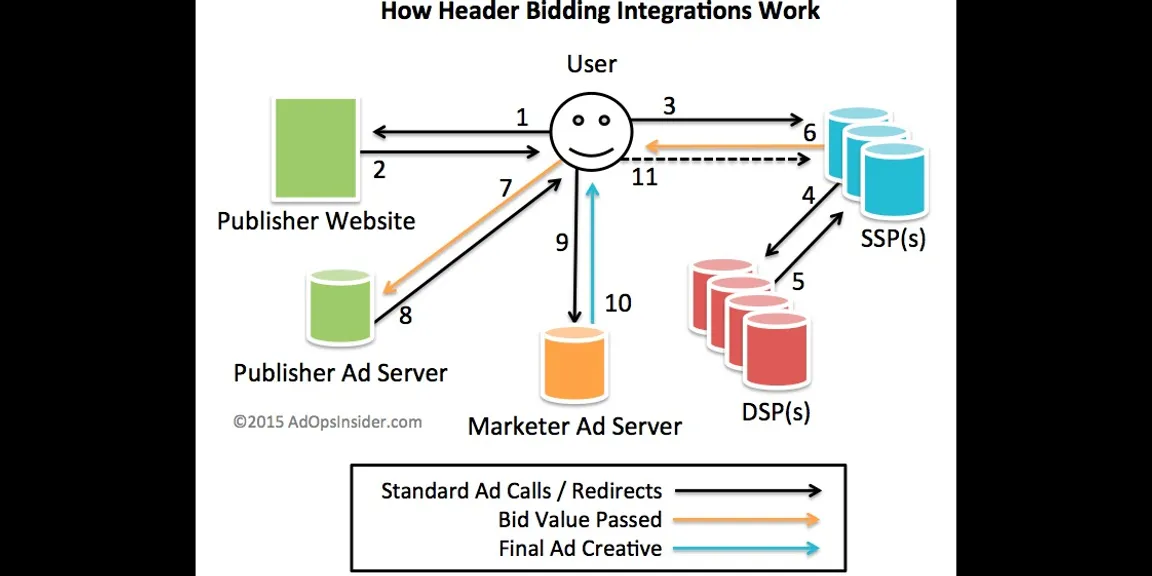

5 awesome ideas on how to increase publishers ad revenue
The rapidity at which online marketing strategies are making progress is somewhat bewildering. What works today may not have the same kind of impact tomorrow. Brands collaborating with publishers to increase revenue to their sites is one of the most effective internet marketing strategies that we hear of today. In fact it is not only the brands that benefit from posting the ads on the publishers’ websites, but the publishers themselves as well.
Many think that the only way publishers can earn revenue is by driving traffic to their websites. The more popular a website gets, the more advertisers it attracts. However, it is possible to maximize the income from ads by keeping the traffic flow constant.
Here are a few effective ways publishers can increase their ad revenue;
#1. Header Bidding
Header bidding is the process through which publishers sell their advertising inventory simultaneously to both programmatic and direct advertisers. The publisher's conduct a unified auction outside of their ad servers to sell ad spaces to the advertisers, where the advertisers place their bids on the impressions.
The main idea behind header bidding is to increase the competition between the bidders by allowing different ad exchanges to bid for the same inventory at the same time and effectively increase the publisher’s revenue from the ad.
A number of publishers have already benefited from the use of header bidding tactics. Slader, for example, managed a 20-50% boost in the CPMs after it adopted header bidding.

Image source: Ad OPS INSIDER
#2. Native Advertising
Publishers and advertisers have different types of needs that they want to fulfil through advertising. While the advertisers are seeking high quality website traffic, publishers are looking to increase their fill rates and revenues. Native advertisements can meet both of these requirements.
Native ads are becoming more prevalent these days, by rapidly overshadowing the traditional banner and display ads. Here are a few interesting features of native advertisement;
These ads look as if they are a part of the site’s content as they completely blend with the design and arrangement of the website. They are marked “you may also like,” “more from around the web,” or “sponsored content” sponsored so that the users know what they are clicking on.
The publishers can also exercise more control over the native ads, as opposed to the banner ads where the they cannot do anything about what is being displayed. With the native ads, publishers have the autonomy to decide how the native ad zone should roll out, so that they match the website’s content.
In order to make the native ads more compelling a catchy title, an image and a small yet interesting description are necessary. They should look like just another blog or article on the website.
A perfectly blended native ad zone adds more value to the advertiser’s content and increase revenue for both the publisher and the advertiser.
Here is an example of native advertising;

#3. Audience Extension
Audience extension allows publishers to track down their unique visitors across the web and earn extra revenue by sharing their data with the advertisers. This helps advertisers to reach out to the publisher’s visitors and start serving their ads on other websites as well.
Following are some of the aspects of audience extension;
The publishers can leverage the data they gather through Audience Extension about their traffic to earn a regular income. Therefore, they may choose to keep their own websites an ad-free zone.
Audience extension is based on a technology that uses a cookie, which is a javascript code, to track their visitors all across the web.
Audience extension uses two primary tools for its functioning. They are Data Management Platform tool for collecting data and Demand Side Platform Tool for the execution of the campaign.
For example, suppose an advertiser wants to reach out to the audience of a health and medical information website to serve ads of a particular medical facility. Then the publisher, which is the health and medical information website in this case, will be able to make money by selling the data about its audience which it gathered through audience extension techniques to the advertiser. This data will enable the advertiser to reach out to these visitors on other sites throughout the web.

#4. Placement of Ads
Where you are placing the ads makes a whole lot of difference. If you are looking to improve the CTR of your ad units, then make sure they are intelligently placed. You can position the ad;
Above the fold so that it is visible without having to scroll down the page.
Next to a call to action. However, in this case, you need to ensure that the users do not get confused between the call to action button and the advertisement.
Integrate the ad with the content of the site, so that they appear seamless.
The following image is an example of an ad positioned at the top of a web page.

#5. Size of Ads
Like its position on the website, the size of the ads also influences its effectiveness. You can experiment with different sizes and find out which one works for you the best. However, the webpage should not look overcrowded with advertisements, as this might hamper the UX of the page. No matter how many ads you make space for on your site, only the ones that look the most noteworthy ones will be clicked.
You will notice leaderboards of the size 780x90 at the top of a webpage. You can try and replace it with an AdSense link unit measuring 728×15. This might have improve the CTR of the ads since smaller ads improve the overall UX. However, it may not always result in higher revenue since link units only promote targeted ads but revenues will only be generated if they click the ads.
Following is an example of AdSense link unit ad;

Conclusion
Advertisements play a major role in earning revenues for the publishers and getting relevant traffic for the brands/advertisers. The techniques keep changing with the technology and marketers are always looking for new ways to boost their sales. Publishers can also earn good revenues from advertisement by comparing the ad networks in terms of the payments as well as the quality and relevance of the ads. To maintain a high CTR it is advisable to change the positions of the ads often, so that there is no blind spots. This way, it will also improve the UX of the site.





